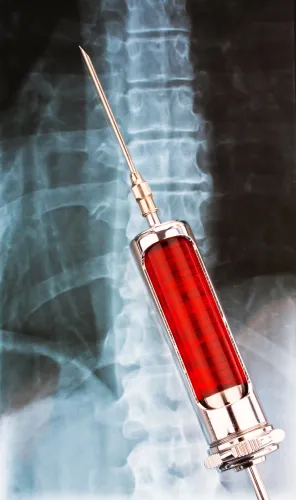Neurology & Pain Management Coding Alert
Keep on the Right Track With Adhesiolysis Coding Smarts
Here’s why you shouldn’t report 62263 in conjunction with 62264. Coders aiming to file clean adhesiolysis claims need to know how to code the associated procedures, while also paying close attention to all of the details in the operative notes, including how many days the catheter stayed in place. Bust the following five myths to ensure your adhesiolysis claims stay in tip-top shape. Myth 1: You Can Report 62263 and 62264 For Open Adhesiolysis Reality: You would report 62263 (Percutaneous lysis of epidural adhesions using solution injection (eg, hypertonic saline, enzyme) or mechanical means (eg, catheter) including radiologic localization (includes contrast when administered), multiple adhesiolysis sessions; 2 or more days) and (… 1 day) for percutaneous lysis of adhesions, not open procedures. Percutaneous defined: CPT® defines percutaneous as “image-guided procedures (eg, computer tomography [CT] or fluoroscopy) performed with indirect visualization of the spine without the use of any device that allows visualization through a surgical incision.” Open defined: On the other hand, a physician performs an open procedure with “continuous direct visualization of the spine through a surgical opening,” per CPT® guidelines. Myth 2: You Can Report 62263 In Conjunction With 62264 Reality: Do not report 62263 and 62264 together. Remember that codes 62263 and 62264 are mutually exclusive, so you should report only one of these codes. Myth 3: You Should Report 62263 For Each Adhesiolysis Treatment Reality: You should count the days and not the adhesions. Codes 62263 and 62264 are reported to describe the entire series of injections/infusions spanning the total number of treatment days. “Code 62263 is not reported for each adhesiolysis treatment, but should be reported once to describe the entire series of injections/infusions spanning two or more treatment days,” according to CPT® guidelines. Similarly, “Code 62264 describes multiple adhesiolysis treatment sessions performed on the same day,” CPT® adds. Report 62263 only once regardless of the number of days in total, as long as it is more than one day. The same applies to 62264, except that it includes all treatments for one day only. “This pair of codes distinguishes the patient in whom the catheter is placed and removed the same day compared with the patient in which the catheter remains for at least one night,” says, Gregory Przybylski, MD, past chairman of neurosurgery and neurology at the New Jersey Neuroscience Institute, JFK Medical Center in Edison, New Jersey. Coding example: If you read in the operative note that the physician inserted the catheter, which was left in place for three days and the treatment was continued, you should report a single unit of 62263, regardless of the number of adhesions the physician treated. You should not report this procedure as 62263 x3. Myth 4: You should Not Report Racz procedures With 62263 or 62264 Reality: Racz procedures are also known as epidural lysis of spinal adhesions. The surgeon may perform one of these to break down scar tissue in a patient who has pain. So, if you see “Racz procedure” in the operative notes, you should report 62263 or 62264. Myth 5: You Can Bill Separately for Fluoroscopy Reality: When your report 62263 or 62264, you should not bill separately for fluoroscopic guidance or injections of contrast for epidurography. “Codes 62263 and 62264 include the procedure of injections of contrast for epidurography (72275, Epidurography, radiological supervision and interpretation) and fluoroscopic guidance and localization (+77003, Fluoroscopic guidance and localization of needle or catheter tip for spine or paraspinous diagnostic or therapeutic injection procedures (epidural or subarachnoid) (List separately in addition to code for primary procedure)) during initial or subsequent sessions,” explains the CPT® guidelines.
Related Articles
Neurology & Pain Management Coding Alert
- CPT® Coding:
Check Out Individual Policies on Face/Neck Chemodenervation
Payer matters when it comes to diagnoses for these injections. Coders have a potential problem [...] - ICD-10 Coding:
Many Payers Put Out Their Own Chemodenervation Dx Code Lists
Know every payer’s policy on paying 64612-64617. Getting to the correct diagnosis code for face/neck [...] - 2019 MPFS:
Prep Now for Potential E/M Changes
If implemented, these new CMS-proposed rules will affect your practice. When it comes to the [...] - Mythbusters:
Keep on the Right Track With Adhesiolysis Coding Smarts
Here’s why you shouldn’t report 62263 in conjunction with 62264. Coders aiming to file clean [...] - You Be the Coder:
ICD-10's 2019 Hurricane-Related Dx Codes
Question: Are there any 2019 ICD-10 codes we should be using that pertain to patients [...] - Reader Question:
Follow These Px Email Rules
Question: How do we document email exchanges between a patient and our provider or nonphysician [...] - Reader Question:
Ensure ABN Success With These G Modifiers
Question: I’m filing a claim that includes an advance beneficiary notice (ABN) for a Medicare [...]




